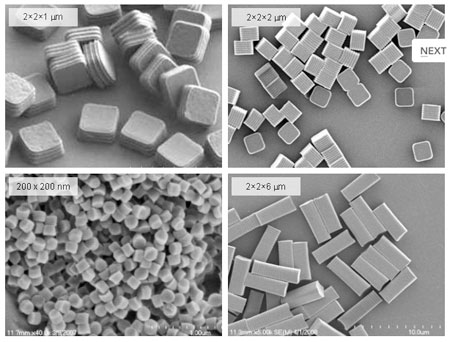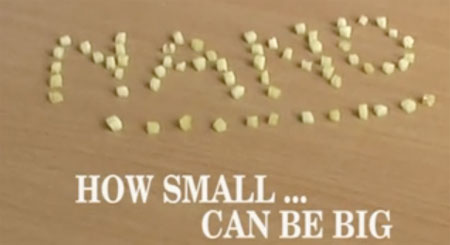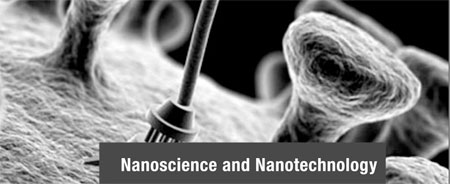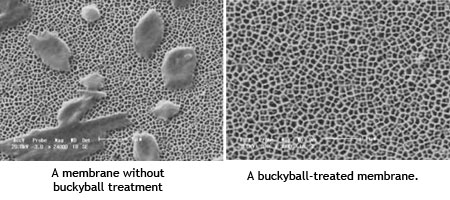Aeronautical applications of carbon nanotubes
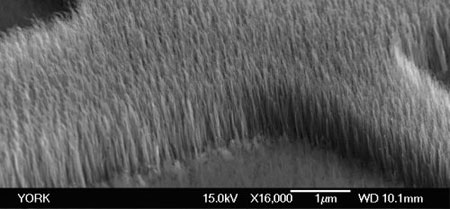
Image obtained from http://www.elec.york.ac.uk
The Madrid Instituto de Estudios Avanzados en Nanociencia (IMDEA-Nanociencia) participates in ICARO project, coordinated by Airbus España, whose objective is the basic and applied research of new advanced composite materials and the study of new designs and configurations for aircraft.
The Nanoscience IMDEA-contribution is the development of a new type of lightweight material and high electrical conductivity that can replace metal nets used in aircraft as lighting strike protection. To this end, they will explore the possibilities of harnessing the high conductivity of carbon nanotubes.
The success of this development could lead to lighter aircraft than the current; thereby reducing fuel consumption can increase the autonomy flight.
Collaboration agreement to develop siRNA Therapeutics
Liquidia Technologies Inc. and Abbott agreed to develop PRINT® nanoparticles for the delivery of siRNA-based therapeutics. With this accord, Liquidia provides certain rights to use the PRINT technology for the development and commercialization of siRNA therapeutics.
With the nanofabrication process called PRINT® (Particle Replication in Non-Wetting Templates) Liquidia Technologies manufactures precise nanoparticles with size, shape, surface chemistry and composition defined.
Liquid is a spin-off from the University of North Carolina-Chapel Hill founded in 2004 that designs and manufactures micro and nanoparticles, and high precision patterned films for applications in the fields of life sciences and materials.
Improve business competitiveness through Nanotechnology

Image obtained from http://www.thecoolhunter.co.uk
This is the aim of the pilot project “Nanotechnology, innovative solutions for companies” that had launched Gobierno de La Rioja through the Concejalía of Industry.
Under this program, new projects will set eight different companies in motion to apply nanotechnology in the production processes of enterprises from La Rioja. The eight selected companies belong to sectors as diverse as metal, plastic, food, furniture and wine.
This initiative aims to transfer technology derived from nanotechnology solutions to traditional enterprises from La Rioja and improve their competitiveness.
The eight companies selected for this experiment are: Intranox, Tecnocárnico Valle del Ebro, Sausages Alvic, World Metal Wizard, Gimplast 2000, Alba Rubio. Other companies as Rigran, Ruhs Furniture, Ruiz Workshop and Dolmar presented projects from this initiative.
Nanosilica production in Castellón
This year 2009, Castellón will be the place to manufacture the line of organic additives for concrete, called Gaia, which substitutes microsilica.
The alliance between Cognoscible Technologies, Industrias Ulmen and Cuore Concrete Industries has made possible the production of this nanoaditive in Spain.
Cognoscible Technologies is the creator of the Gaia Nanosilica, which allows obtaining the ISO 14001, eliminates the risk of silicosis in the manipulators, increases quality of the concrete and saves costs due to lower cement and superplasticizers.
In addition, the company Cognoscible Technologies, settled down in Barcelona, is working on developing the first generation nanocements through an alliance with Grupo Suñer. The benefits from these nanocements are its lower cost, higher strength than conventional ones, the reduction of CO2 produced and the incorporation of Pico catalysts to emit oxygen instead of CO2.
Surface of the nanomaterials
Last week we put at your disposal the document entitled “Nanoescience and Nanotechnology”. This time we rescue a video on the web that you can use as supplement to that presentation.
This video, “How small … can be big”, explains in a graphic form, starting from a piece of cheese, the increase in the surface area of nanomaterials with respect to the materials to larger scales.
Yflow develops a versatile method to generate nanoparticles

Images obtained from the Yflow website and video on the same http://www.youtube.com/watch?v=_KEfVhg4OpI
Until a few years ago, physical processes were the key of nanotubes production, which causes efficiency to depend on used materials. The Andalusian spin-off YFlow introduces physical forces in the process.
The developed method involves generating jets of two or more fluids through an electrified needle. Its solidification produces nanotubes and nanofiber and their breakage causes a spray consisting of droplets with capsular structure: the nanocapsules. The versatility of the process in both materials and sizes, allows applying this approach to areas such as medicine, pharmacology, food industry or aeronautics.
YFlow’s story began to grow in the research laboratories of the universities of Málaga and Seville, giving birth to the company in 2001.
Nanoscience and Nanotechnology
We present an educational resource for teachers and students that shows the basic concepts of nanoscience and nanotechnology.
The contents of this lecture are:
Nanoscale
Nanoscience
Nanotechnology
Natural nanotechnology
Nanotechnology and electronics
Chemical Nanotechnology
Nanobiotechnology
Biomedical Nanotechnology
Synthesis of nanomaterials
Top-down Approach
Bottom-up Approach
Hybrid Approach
Types of nanomaterials
Carbon-Based Nanomaterials
Nanomaterials based on metal
Dendrimers
Compounds
Developed more efficient technology for oil refining
The company Rive Technology has developed new zeolites, called RiveCat, which makes more efficient the oil refining process. The technology developed is a method for modifying the pore size of zeolites.
According to the authors, these new catalysts will reduce the amount of oil converted into coke and will help to reduce the production of called aromatic compounds such as benzene that contribute to pollution.
The application of this method is not restricted to cracking crude, since you can select the size of zeolite’s pore, which can extend its use to the prosecution of other fossil sources or hydrocarbons sources developed in the future.
The company Rive Technology, a spin-off of the Massachussets Institute of Technology (MIT), commercialize this catalysts technology for petroleum refining.
Electricity from irregular mechanical movements
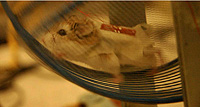
A hamster wearing a jacket with attached nanogenerators. Image obtained from Georgia Institute of Technology web site
Can you imagine that while you were answering an email with your computer or performing any action on the keyboard of mobile devices, you were generating an electric current?
Maybe, thanks to a group of researchers at the Georgia Institute of Technology this could be possible. They had managed to generate electricity from the movement that we make with the finger when we type. The developed technology can transform any mechanical disturbance into electrical energy.
Through researches carried out in recent years, this team has succeeded in showing that nanagenerators can produce electricity from irregular mechanical movements, such as the vibration of the vocal cords or a hamster running in his cage. Obtaining energy from irregular movements is significant because most of the biomechanical energy is variable.
The piezoelectric effect is the base of the nanogenerator operation –where cables are between 100 and 800 nanometers in diameter. During this phenomenon, certain materials produce electric charges when they bent their selves and then get relaxed.
For the creation of the generators, they encapsulated zinc oxide wires on a flexible polymer substrate with a Shottky Barrier at one end of the wires to control the flow of current. They place the nanogenerators individually or in groups in the area where there are movements to generate electricity. These movements bend the substrate where they were encapsulated, producing small amounts of alternate electrical current.
Generating electrical energy from muscle movements or blood flow movements permits using these devices for feeding nanodevices that could control vital signs.
The synchronization must be perfect when multiple nanogeneradores work together to maximize the flow production. The use of a substrate that is flexible in one direction solved the synchronism problem, forcing the generators to think together. Even so, differences still take place in the output of each generator caused by variations in the bending amount and due to inconsistencies in handheld devices.
Buckyballs for water treatment systems
Microscopic coal particles of the fullerene family called buckyballs could help to maintain cleaner water pipes.
In the course of time, water membranes and pipelines accumulate bacteria and other microorganisms for water treatment. As bacteria are joining these surfaces attract other organic matter, creating a biological film that grows over time. The results obtained in the laboratory by a team from Duke University show that buckyballs might be able to prevent this coating, known as biofouling. The only alternative to this system is expensive, involves digging up the pipes, and replaces the membranes. Biofouling is one of the problems of higher costs associated with water treatment systems based on membranes.
A group of engineers from Duke University says that buckyballs hamper the action of bacteria and other microorganisms accumulated in membranes that treatment plants use to filter water. Due to this property, these nanoparticles could solve one of the most expensive problems in water treatment.
These membranes have small quickly coating pores that would be covered quickly. If the half-life time of membranes increases it would cause a significant reduction in the cost of these systems.
The membranes treated with buckyballs present a lower bacterial layer than untreated ones.
